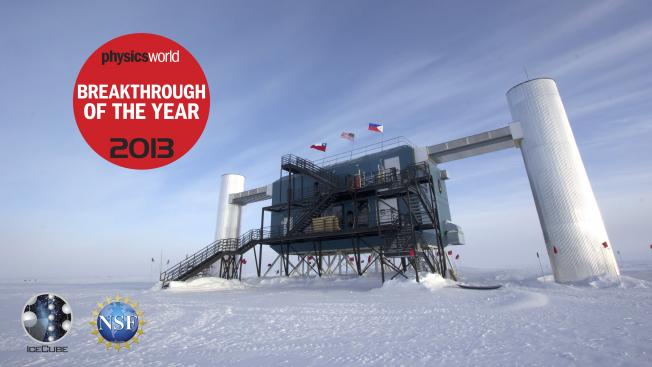Constraints on Galactic Neutrino Emission with Seven Years of IceCube Data
Astrophysical Journal University of Chicago Press 849:1 (2017) ARTN 67
Multi-messenger Observations of a Binary Neutron Star Merger
Astrophysical Journal Letters American Astronomical Society 848 (2017) L12-L12
Abstract:
On 2017 August 17 a binary neutron star coalescence candidate (later designated GW170817) with merger time 12:41:04 UTC was observed through gravitational waves by the Advanced LIGO and Advanced Virgo detectors. The Fermi Gamma-ray Burst Monitor independently detected a gamma-ray burst (GRB 170817A) with a time delay of ∼1.7s with respect to the merger time. From the gravitational-wave signal, the source was initially localized to a sky region of 31 deg(2) at a luminosity distance of 40+8−8 Mpc and with component masses consistent with neutron stars. The component masses were later measured to be in the range 0.86 to 2.26 M⊙. An extensive observing campaign was launched across the electromagnetic spectrum leading to the discovery of a bright optical transient (SSS17a, now with the IAU identification of AT 2017gfo) in NGC 4993 (at ∼40Mpc) less than 11 hours after the merger by the One-Meter, Two Hemisphere (1M2H) team using the 1 m Swope Telescope. The optical transient was independently detected by multiple teams within an hour. Subsequent observations targeted the object and its environment. Early ultraviolet observations revealed a blue transient that faded within 48 hours. Optical and infrared observations showed a redward evolution over ∼10 days. Following early non-detections, X-ray and radio emission were discovered at the transient’s position ∼9 and ∼16 days, respectively, after the merger. Both the X-ray and radio emission likely arise from a physical process that is distinct from the one that generates the UV/optical/near-infrared emission. No ultra-high-energy gamma-rays and no neutrino candidates consistent with the source were found in follow-up searches. These observations support the hypothesis that GW170817 was produced by the merger of two neutron stars in NGC 4993 followed by a short gamma-ray burst (GRB 170817A) and a kilonova/macronova powered by the radioactive decay of r-process nuclei synthesized in the ejecta.Measurement of the νμ energy spectrum with IceCube-79: IceCube Collaboration
European Physical Journal C 77:10 (2017)
Abstract:
IceCube is a neutrino observatory deployed in the glacial ice at the geographic South Pole. The νμ energy unfolding described in this paper is based on data taken with IceCube in its 79-string configuration. A sample of muon neutrino charged-current interactions with a purity of 99.5% was selected by means of a multivariate classification process based on machine learning. The subsequent unfolding was performed using the software Truee. The resulting spectrum covers an Eν-range of more than four orders of magnitude from 125 GeV to 3.2 PeV. Compared to the Honda atmospheric neutrino flux model, the energy spectrum shows an excess of more than 1.9σ in four adjacent bins for neutrino energies Eν≥177.8TeV. The obtained spectrum is fully compatible with previous measurements of the atmospheric neutrino flux and recent IceCube measurements of a flux of high-energy astrophysical neutrinos.Astrophysical neutrinos: IceCube highlights
Nuclear and Particle Physics Proceedings Elsevier 291 (2017) 167-174
Atmospheric neutrino results from IceCube-DeepCore and plans for PINGU
Journal of Physics: Conference Series 888:1 (2017)



